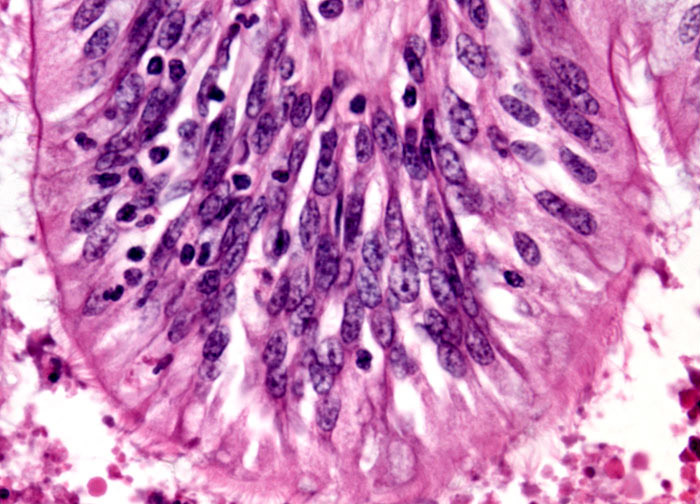
Bronchiectasis at 40x Magnification
Several different investigative techniques may be used by medical professionals to aid in diagnosis of bronchiectasis, including chest x-rays, CT scans, sputum culture, cystic fibrosis testing, analysis of serum immunoglobulin, and skin testing for tuberculosis. Once the condition is positively identified, then a plan of treatment may be formed. Generally this plan emphasizes the need to manage infections and phlegm production so that secretions do not block the airways and complications do not develop. Some means of keeping the condition under control include administration of expectorants, bronchodilators, and antibiotics. Also, since the symptoms of bronchiectasis can become amplified if the patient smokes or is exposed to high levels of air pollution, medical professionals generally advise patients to avoid smoking and highly polluted areas. In the most serious cases of bronchiectasis, lung resection may be necessary if other less invasive modes of treatment prove ineffective.













